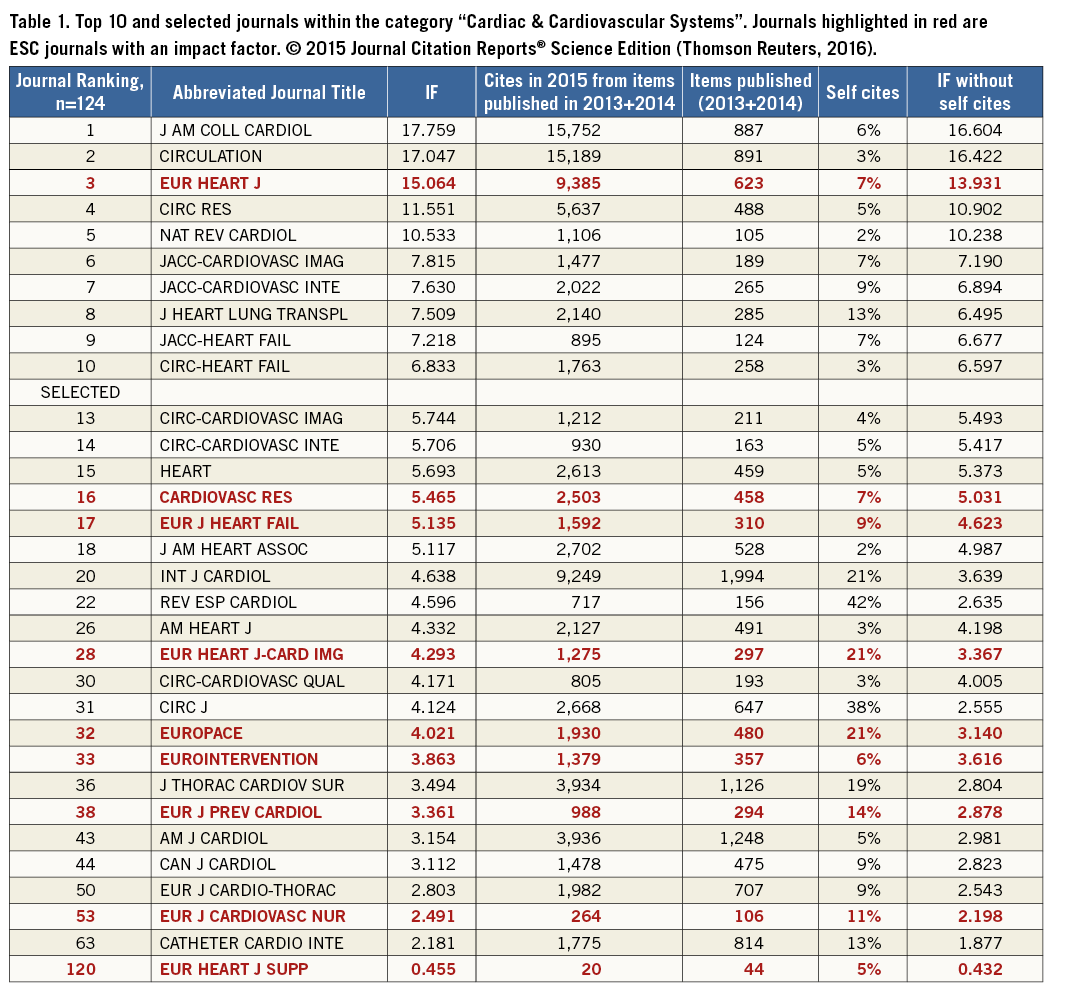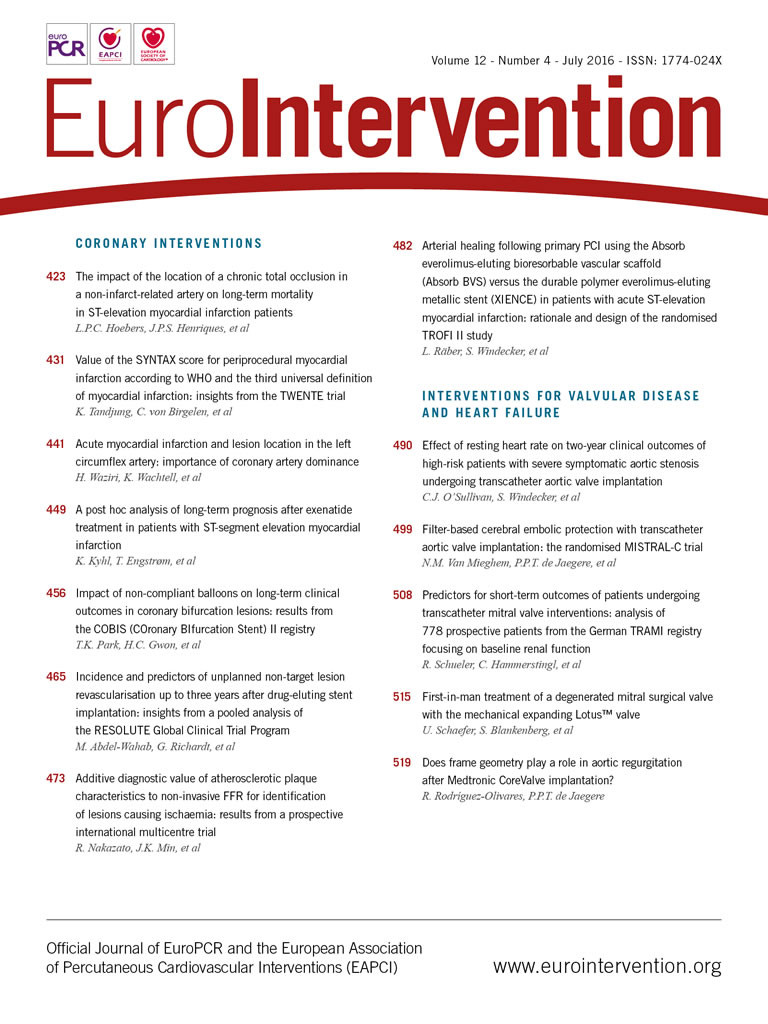
As with the advent of every summer, the EuroIntervention Editorial Board looks forward to the annual announcement of our impact factor. This year’s announcement was particularly special as we have attained our highest impact factor to date, 3.8631.
Late last month, Thomson Reuters published the 2016 Journal Citation Reports® (JCR). Although far from being a perfect metric, the JCR is still the most influential measure of evaluating peer-reviewed journals2. The journal impact factor (JIF) ranking system is based on the number of times an average article is cited during the previous two years. Even though the impact factor was created in 1955 by Eugene Garfield3, the first JCR was only published in 1975. The 2016 results provide impact metrics from the 2015 data, which include 11,365 journals from 81 countries in 234 disciplines within the sciences and social sciences. Of these, 239 new journals have been included in the listing, having received their first JIF. When compared with their 2015 ratings, we can observe that 57% of journals have seen an increase in JIF, while 42% have seen a decrease. With a truly outstanding 131.723, CA: A Cancer Journal for Clinicians remains the journal with the highest JIF. Other notable results are The New England Journal of Medicine 59.558, The Lancet 44.002, Nature 38.138 and Science 34.661.
Unfortunately, 18 journals were excluded from this year’s ranking due to integrity concerns and will be re-evaluated after a year for reconsideration. The majority of exclusions were due to excessive rates of self-citation (>50%) which led to a distortion in the category ranking: the highest self-citer was the Journal of Physical Therapy Science (78%). Within our category, “Cardiac & Cardiovascular Systems”, the majority of the journals fall under the communally acceptable 20% self-citation level: EuroIntervention’s self-citation is on a par with JACC at 6% (Table 1).

Who cited who? Interestingly, in 2015, articles published in JACC CVI cited papers published in EuroIntervention in 2013 and 2014 108 times, followed by CCI citing our 2013/2014 papers 95 times. At the same time, in 2015, we cited JACC’s 2013/2014 papers 130 times, followed by our citing JACC CVI’s 2013/2014 papers 69 times. Finally, within our cardiovascular interventional subspeciality, the five-year trend remains relatively constant (Figure 1).

Figure 1. Five-year trend of major cardiovascular interventional journals. © 2015 Journal Citation Reports® Science Edition (Thomson Reuters, 2016).
We have discussed many times in these pages the merits and pitfalls of the impact factor. Concurrent to the impact factor ranking, we know downloads/website views/usage metrics are becoming increasingly important, particularly in terms of educational type papers. One may consider that usage metrics are more applicable to practitioners and that impact factors are more applicable to researchers. One aspect is certain –irrespective of the which metric is analysed (usage vs. citations)– at the dawning of the big data age, scientific analysis is becoming big business with Thomson Reuters currently valued at $3 billion4.

